The Majestic Emperor Penguin: A Deep Dive into the Antarctic’s Apex Bird
The Emperor Penguin, Aptenodytes forsteri, reigns supreme as the tallest and heaviest of all living penguin species. More than just a symbol of the Antarctic, this incredible bird embodies resilience, dedication, and remarkable adaptation to one of Earth’s harshest environments. This comprehensive guide explores every facet of the Emperor Penguin’s life, from its evolutionary history and unique behaviors to its current conservation status and interactions with humans.
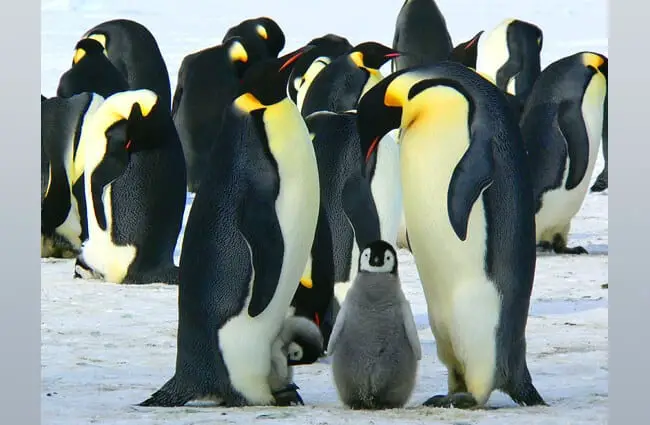
Habitat and Distribution: Life on the Antarctic Ice
Emperor Penguins are exclusively found in Antarctica. They breed on stable sea ice surrounding the continent and forage in the surrounding Southern Ocean. Colonies, often numbering in the thousands, establish themselves on areas of fast ice, ice that is firmly attached to the coastline. The specific locations vary year to year, depending on ice conditions. Popular breeding grounds include the Ross Sea, the Weddell Sea, and near Snow Hill Island.
This reliance on sea ice makes the Emperor Penguin particularly vulnerable to climate change. Decreasing ice extent and increased ice instability directly threaten breeding success and colony viability.
Evolutionary History: A Legacy of Adaptation
Penguins, as a group, evolved from flying ancestors approximately 60 million years ago, during the Paleocene epoch. The evolutionary path led them toward a life immersed in the ocean, resulting in the loss of flight and the development of streamlined bodies, flipper-like wings, and dense plumage for insulation.
The Emperor Penguin, as the largest species, represents a culmination of these adaptations. It diverged from other penguins approximately 10–15 million years ago, a relatively recent event in penguin history that allowed it to specialize in the extreme conditions of the Antarctic. Fossil evidence is scarce, making the precise details of its evolutionary journey still a subject of ongoing research.
Diet and Foraging: A Feast from the Southern Ocean
Emperor Penguins are carnivorous predators, with a diet primarily consisting of fish, krill, and squid. They are exceptional divers, capable of reaching depths of over 500 meters (1,640 feet) and holding their breath for up to 20 minutes. This allows them to access food sources unavailable to many other marine animals.
Foraging trips can extend for days or even weeks, during which time the birds fast while caring for their eggs or chicks. They utilize a combination of echolocation and vision to locate prey in the dark depths of the ocean.
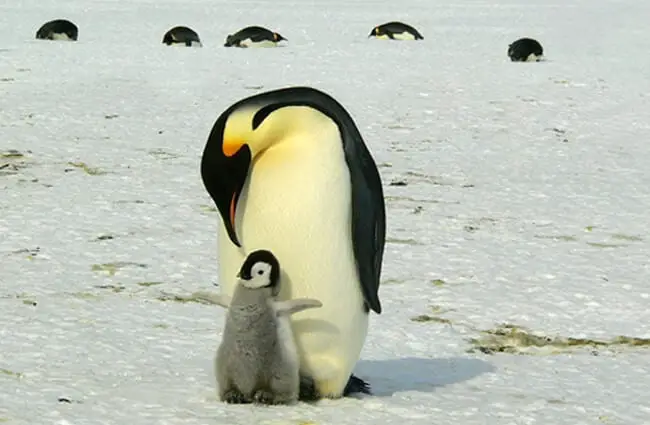
Mating and Reproduction: A Test of Endurance
The Emperor Penguin’s breeding cycle is unlike any other bird. It begins in the Antarctic winter, a time of extreme cold and darkness. Males and females form pairs, often after years of courtship. The female lays a single egg, which is promptly passed to the male for incubation.
The male balances the egg on his feet, covering it with a patch of feathered skin and down, for over two months, enduring blizzards and fasting throughout. When the female returns from foraging, she takes over incubation while the male ventures out to feed.
Once the chick hatches, both parents participate in feeding it regurgitated fish and krill. Chicks huddle together for warmth in a ‘crèche’, a group care arrangement that provides protection from the elements. The entire process, from courtship to fledging, spans over a year.
Ecological Role and Interactions
Emperor Penguins play a crucial role in the Antarctic ecosystem. They are significant predators of fish, krill, and squid, helping to regulate populations of these species. Conversely, they serve as prey for leopard seals and, occasionally, killer whales (orcas).
Their presence also influences nutrient cycling in the Southern Ocean. Penguin guano (droppings) provides essential nutrients for phytoplankton, the base of the marine food web. They interact with other seabirds, often sharing foraging grounds and competing for resources.

Emperor Penguins and Humans: A Complex Relationship
Historically, humans have impacted Emperor Penguins through hunting for meat, oil, and feathers. However, these practices have largely ceased due to conservation efforts. Today, the primary threats to Emperor Penguins are indirect, stemming from climate change, pollution, and increasing human activity in Antarctica.
Tourism to Antarctica is carefully regulated to minimize disturbance to penguin colonies. Scientific research plays a vital role in monitoring penguin populations and understanding the impacts of environmental change. Efforts to reduce greenhouse gas emissions are crucial for protecting the Antarctic ecosystem and ensuring the long-term survival of the Emperor Penguin.
Conservation Status and Future Outlook
The Emperor Penguin is currently classified as ‘Near Threatened’ by the International Union for Conservation of Nature (IUCN). Projections indicate that climate change could lead to significant population declines in the coming decades. Loss of sea ice threatens breeding success, while changes in prey availability could impact foraging efficiency.
Protecting the Antarctic ecosystem requires international cooperation and a commitment to sustainable practices. Reducing greenhouse gas emissions, minimizing pollution, and regulating human activity are essential steps for ensuring a future for the majestic Emperor Penguin.
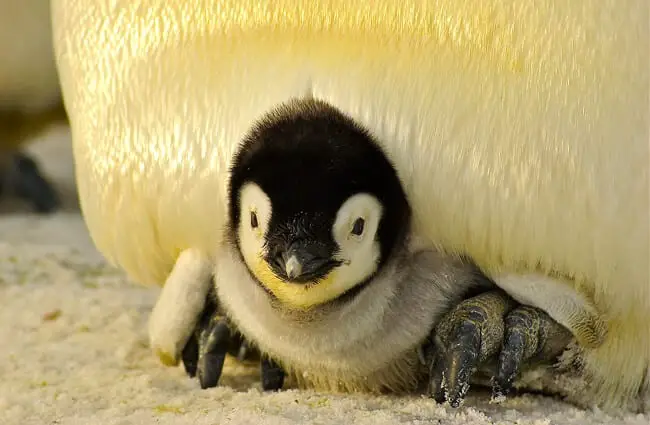
Fascinating Facts About Emperor Penguins
- Size: They are the largest penguin species, standing approximately 1.15 meters (3.8 feet) tall and weighing between 22 and 45 kilograms (49 to 99 pounds).
- Diving Prowess: Emperor Penguins can dive to depths exceeding 500 meters and hold their breath for over 20 minutes.
- Insulation: They possess exceptionally dense plumage, with approximately 30 feathers per square centimeter, providing remarkable insulation against the frigid Antarctic temperatures.
- Huddling Behavior: During blizzards, Emperor Penguins huddle together in large groups to conserve heat. They rotate positions to ensure all individuals have a chance to be in the warmer interior of the huddle.
- Lifespan: Emperor Penguins can live for over 20 years in the wild.
- Vocalization: They communicate using a variety of vocalizations, including trumpeting calls and complex displays.
For the Aspiring Zoologist: Advanced Insights
Emperor Penguin physiology is a remarkable example of adaptation to extreme environments. Their countercurrent heat exchange system in the legs and flippers minimizes heat loss. Their hemoglobin has a unique structure that allows for efficient oxygen uptake at low temperatures. Research is ongoing to understand the genetic basis of these adaptations and the potential impacts of climate change on their evolutionary trajectory. The study of their foraging behavior utilizes satellite tracking and advanced bioacoustic monitoring.

Encountering an Emperor Penguin: A Guide for Hikers
While rare, encountering an Emperor Penguin outside of established colonies is possible. If you do, maintain a respectful distance of at least 5 meters (16 feet). Avoid making sudden movements or loud noises. Do not approach, touch, or feed the penguin. Report your sighting to local authorities or researchers.
Caring for Emperor Penguins in Captivity
Emperor Penguins are notoriously difficult to maintain in captivity due to their specialized needs. Large, climate-controlled enclosures are essential, mimicking the Antarctic environment. A deep pool with ice floes is required for swimming and breeding. Diet must be carefully formulated to provide essential nutrients. Enrichment activities are crucial for stimulating natural behaviors. Maintaining strict biosecurity protocols is vital to prevent the spread of disease.

![Red Angus Closeup of a beautiful Red Angus cowPhoto by: U.S. Department of Agriculture [pubic domain]https://creativecommons.org/licenses/by/2.0/](https://animals.net/wp-content/uploads/2020/03/Red-Angus-4-238x178.jpg)
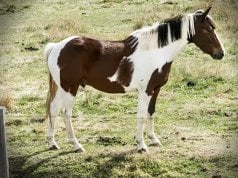
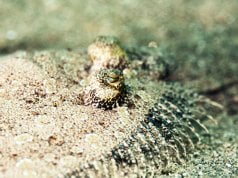
![Red Angus Closeup of a beautiful Red Angus cowPhoto by: U.S. Department of Agriculture [pubic domain]https://creativecommons.org/licenses/by/2.0/](https://animals.net/wp-content/uploads/2020/03/Red-Angus-4-100x75.jpg)

